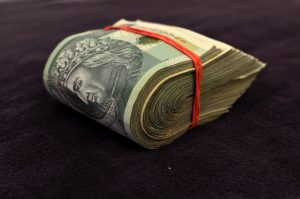The foreign exchange (forex) market is a dynamic and constantly evolving environment. One of the key aspects of forex trading is understanding how price cycles are determined. Price cycles in forex refer to the periodic fluctuations in the exchange rate of a currency pair over time. These cycles can be influenced by a variety of economic, political, and social factors that impact the supply and demand of each currency. In this article, we will explore the factors that determine price cycles in forex.
Supply and Demand
The most fundamental factor that affects price cycles in forex is supply and demand. In the forex market, the exchange rate of a currency pair is determined by the supply and demand of each currency. When demand for a currency increases, its value appreciates, and when demand decreases, its value depreciates. Similarly, when the supply of a currency increases, its value depreciates, and when the supply decreases, its value appreciates.
Economic Indicators
Economic indicators are another important factor that determines price cycles in forex. Economic indicators are statistical measures that provide insight into the health of a country’s economy. These indicators include gross domestic product (GDP), inflation rates, unemployment rates, and trade balances. When these indicators are positive, it can increase demand for a currency, causing its value to appreciate. Conversely, negative economic indicators can decrease demand for a currency, causing its value to depreciate.
Central Bank Policies
Central bank policies are another crucial factor that determines price cycles in forex. Central banks are responsible for setting interest rates and implementing monetary policies that affect the supply and demand of a currency. When a central bank raises interest rates, it can increase demand for a currency, causing its value to appreciate. Conversely, when a central bank lowers interest rates, it can decrease demand for a currency, causing its value to depreciate.
Political Events
Political events can also impact price cycles in forex. Political events such as elections, government policy changes, and geopolitical tensions can impact the supply and demand of a currency. For example, if a country’s political stability is called into question, it can decrease demand for its currency, causing its value to depreciate. Similarly, if a country’s government implements policies that are perceived as positive, it can increase demand for its currency, causing its value to appreciate.
Market Sentiment
Market sentiment, or the overall attitude of investors toward a particular currency, can also impact price cycles in forex. Market sentiment is often influenced by a variety of factors, including economic indicators, political events, and news events. When investors are optimistic about a currency’s prospects, it can increase demand for the currency, causing its value to appreciate. Conversely, when investors are pessimistic about a currency’s prospects, it can decrease demand for the currency, causing its value to depreciate.
Conclusion
Price cycles in forex are determined by a variety of factors, including supply and demand, economic indicators, central bank policies, political events, and market sentiment. Traders need to stay informed about these factors and how they impact the exchange rate of a currency pair. By understanding the factors that determine price cycles in forex, traders can make informed decisions and develop effective trading strategies that can help them succeed in the forex market.





